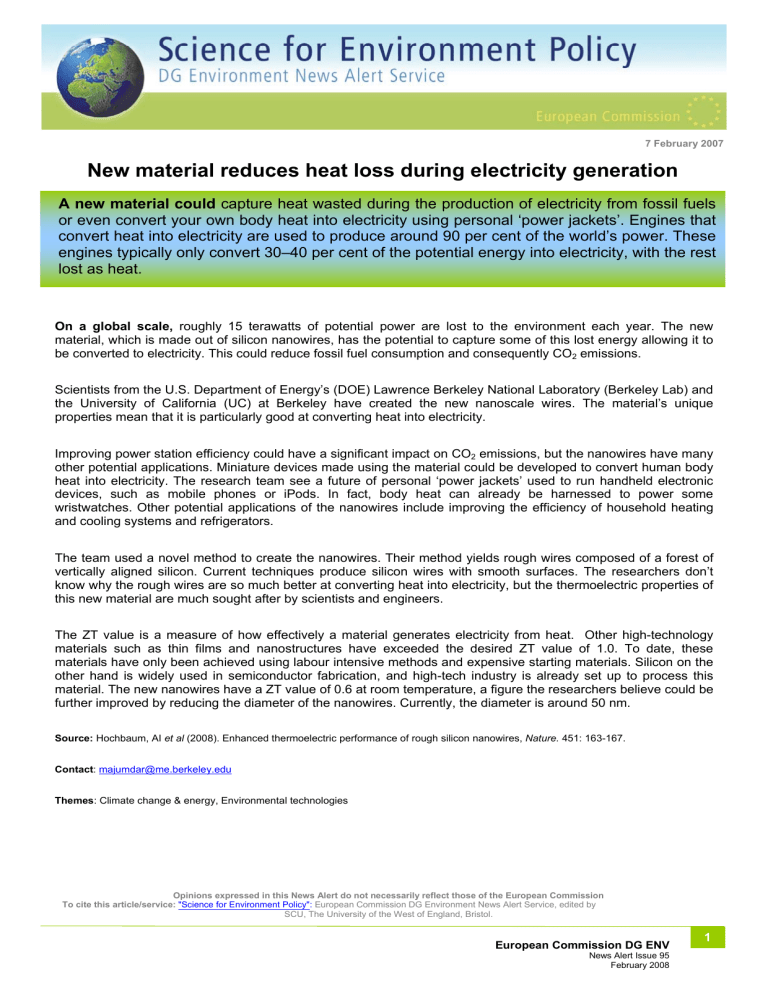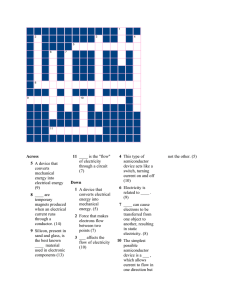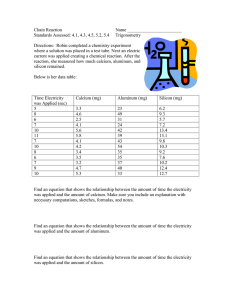New material reduces heat loss during electricity generation

7 February 2007
New material reduces heat loss during electricity generation
A new material could capture heat wasted during the production of electricity from fossil fuels or even convert your own body heat into electricity using personal ‘power jackets’. Engines that convert heat into electricity are used to produce around 90 per cent of the world’s power. These engines typically only convert 30–40 per cent of the potential energy into electricity, with the rest lost as heat.
On a global scale, roughly 15 terawatts of potential power are lost to the environment each year. The new material, which is made out of silicon nanowires, has the potential to capture some of this lost energy allowing it to be converted to electricity. This could reduce fossil fuel consumption and consequently CO
2
emissions.
Scientists from the U.S. Department of Energy’s (DOE) Lawrence Berkeley National Laboratory (Berkeley Lab) and the University of California (UC) at Berkeley have created the new nanoscale wires. The material’s unique properties mean that it is particularly good at converting heat into electricity.
Improving power station efficiency could have a significant impact on CO
2
emissions, but the nanowires have many other potential applications. Miniature devices made using the material could be developed to convert human body heat into electricity. The research team see a future of personal ‘power jackets’ used to run handheld electronic devices, such as mobile phones or iPods. In fact, body heat can already be harnessed to power some wristwatches. Other potential applications of the nanowires include improving the efficiency of household heating and cooling systems and refrigerators.
The team used a novel method to create the nanowires. Their method yields rough wires composed of a forest of vertically aligned silicon. Current techniques produce silicon wires with smooth surfaces. The researchers don’t know why the rough wires are so much better at converting heat into electricity, but the thermoelectric properties of this new material are much sought after by scientists and engineers.
The ZT value is a measure of how effectively a material generates electricity from heat. Other high-technology materials such as thin films and nanostructures have exceeded the desired ZT value of 1.0. To date, these materials have only been achieved using labour intensive methods and expensive starting materials. Silicon on the other hand is widely used in semiconductor fabrication, and high-tech industry is already set up to process this material. The new nanowires have a ZT value of 0.6 at room temperature, a figure the researchers believe could be further improved by reducing the diameter of the nanowires. Currently, the diameter is around 50 nm.
Source: Hochbaum, AI et al (2008). Enhanced thermoelectric performance of rough silicon nanowires, Nature.
451: 163-167.
Contact : majumdar@me.berkeley.edu
Themes : Climate change & energy, Environmental technologies
Opinions expressed in this News Alert do not necessarily reflect those of the European Commission
To cite this article/service: "Science for Environment Policy": European Commission DG Environment News Alert Service, edited by
SCU, The University of the West of England, Bristol.
European Commission DG ENV
News Alert Issue 95
February 2008
1



